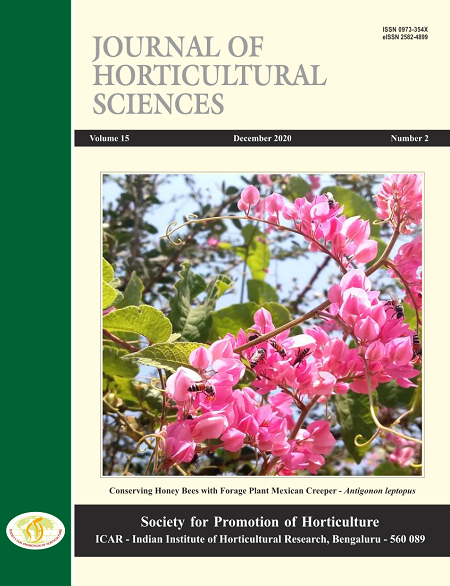A promising new tamarind selection-lakshamana : Linking biodiversity with livelihood
DOI:
https://doi.org/10.24154/jhs.v15i2.952Keywords:
Tamarind, Selection, Pulp recovery, Puld yieldAbstract
Tamarind is a well-known commodity of Indian cuisine having medicinal and industrial uses. It is a nutritious tree crop of widespread occurrence growing on marginal lands in semi-arid and sub-humid tropical climates of India, making it highly valuable in ensuring food security for rural poor. Given the great potential of this neglected and underutilized species to address global challenges such as hunger, poverty and climate change adaptation, there is a need to revisit research and development priorities in its favor and to develop strategies together with stakeholders to increase its utilization. In the present study, a survey was undertaken in Tumkur district of Karnataka to characterize the variability available in tamarind for pod and tree characters and identify superior trees using horticultural traits. A farmer’s tamarind selection “Lakshamana” emerged from participatory breeding having significantly better traits compared to local tamarind.
Downloads
References
Bioversity International, Rome and Fundación PROINPA, La Paz https://www.indianspices.com/export/major-itemwise-export.html
Gruberg, H., Meldrum, G., Padulosi, S., Rojas, W., Pinto, M. and Crane, T. 2013. Towards a better understanding of custodian farmers and their roles: insights from a case study in Cachilaya, Bolivia.
Downloads
Published
Issue
Section
License
Copyright (c) 2020 C Kanupirya, G Karunakaran, P Singh

This work is licensed under a Creative Commons Attribution-NonCommercial-ShareAlike 4.0 International License.
Authors retain copyright. Articles published are made available as open access articles, distributed under the terms of the Creative Commons Attribution-NonCommercial-ShareAlike 4.0 International License, which permits unrestricted non-commercial use, distribution, and reproduction in any medium, provided the original author and source are credited. 
This journal permits and encourages authors to share their submitted versions (preprints), accepted versions (postprints) and/or published versions (publisher versions) freely under the CC BY-NC-SA 4.0 license while providing bibliographic details that credit, if applicable.





 .
. 











